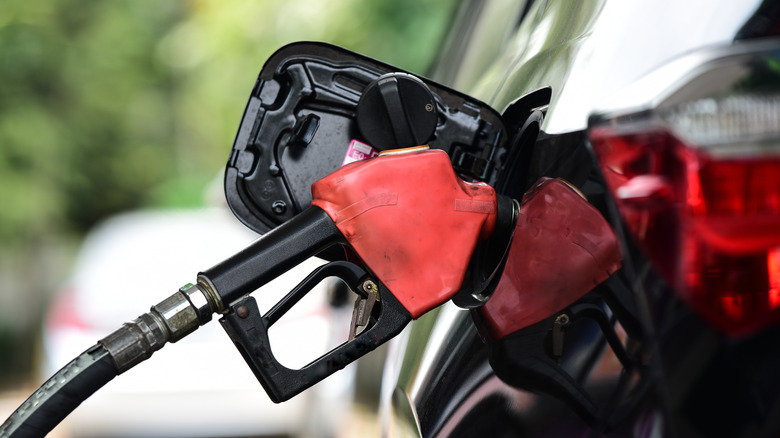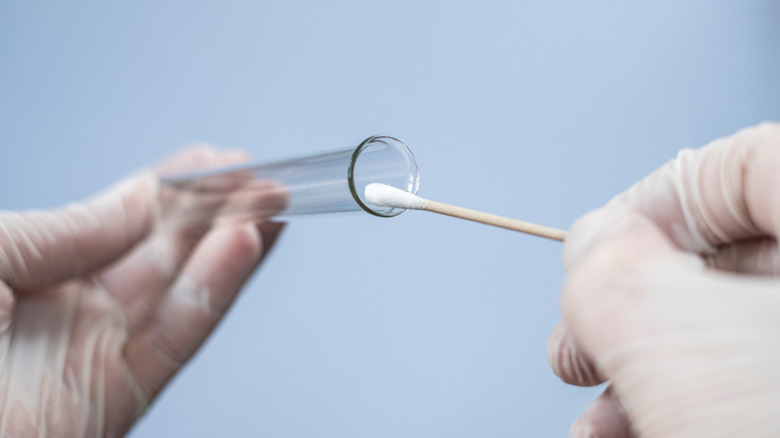How Dirty Is The Gas Pump?
Gas stations have a reputation for being less than sanitary, and that's not the fault of the employees. Even well-kept gas stations see countless people day in and day out, all of them pumping gas and in a hurry. It would be hard to keep any place clean under those conditions. There are cleaning schedules in place at most gas stations to try and keep things in top working order.
Those schedules aren't foolproof, however. Even if employees check every box on their cleaning list, there are a few places they might miss, such as the high-traffic gas pumps and touchpads outside. World Atlas states that both Oregon and New Jersey do not allow drivers to pump their own gas, though Oregon counties below a certain population threshold have different laws as of 2018.
In these states, the pump handle is likely a little cleaner, but every other state sees driver after driver touching the pump and the touchpad. Over 270,000 vehicles were registered in 2019, the vast majority of them needing gas (via Statista). Every time a driver finishes at the pump, they leave a little bit behind.
The numbers are eye-opening
Any true crime fan can tell you that whenever a person touches something, they leave an imprint behind. This imprint includes dermal cells, oils from our skin, and even traces of a unique microbial cocktail that surrounds each person like a cloud, according to the National Institute of Justice. This is fascinating from a forensic perspective, but it's even more important for people worried about cleanliness and disease transfer.
If every person leaves behind these traces, then they're bound to build up on surfaces that many people touch. This is exactly what Kimberly-Clark Corp found when they tested swabs from more than 350 common high-traffic locations (via UPI). The company — which specializes in hygiene and disinfectant products — tested the swabs for adenosine triphosphate, which is a compound present in almost all living cells, including those in bacteria. Items that scored over 300 were considered contaminated with a high risk for passing on disease.
About 71% of gas pumps scored over a 300 in Kimberly-Clark Corp's test. A spokesperson from Kimberly-Clark Corp called the results "eye-opening," according to UPI, particularly in regards to the chances that disease can be passed on through contact. To avoid these germs, Reader's Digest suggests wearing nitrile gloves when using a gas pump or, at the very least, using hand sanitizer after touching one. As the U.S. Centers for Disease Control and Prevention continues to recommend, avoid touching your face until after you've had a chance to wash your hands.


